
The painting "The Burning of the Houses of Lords and Commons" by William Turner is a dramatic depiction of a historical event
"The Burning of the Houses of Lords and Commons" is a painting by William Turner, created in 1835 and based on real events. The artist captured a grand catastrophe in one of the buildings of the Palace of Westminster. The buildings along the banks of the River Thames are engulfed in flames. The fire consumes the House of Commons, casting bright reflections on neighboring towers and reflecting in the river, giving the water the appearance of molten lava. Sparks soar into the sky, and smoke billows. The saturated red and golden colors, bold brushstrokes reminiscent of the works of the Impressionists, demonstrate the power of the raging elements, making the spectators in the foreground appear particularly fragile and vulnerable. In the right part of the canvas, the Westminster Bridge is visible, depicted much larger than it actually is. The artist deliberately distorts perspective to give the work even greater dramatic effect and amplify its emotional resonance.
 William Turner. The Burning of the Houses of Lords and Commons, 1835
William Turner. The Burning of the Houses of Lords and Commons, 1835
- Title of the painting: "The Burning of the Houses of Lords and Commons".
- Artist: William Turner (1775-1851).
- Year of creation: 1835.
- Size: 92.1 х 123.2 cm.
- Style: Romanticism.
- Genre: Landscape.
- Technique: Oil painting.
- Material: Canvas.
- Location: Philadelphia Museum of Art, USA.
William Turner was an English artist who gained fame in the first half of the 19th century as a master of landscape and battle scenes. He enjoyed portraying the raging elements in all their power. He captured his first fire in his youth in 1792 when the Pantheon Theatre burned down. It is not surprising that Turner witnessed the Parliament fire almost from the front rows. While the Houses of Lords and Commons were ablaze, curious onlookers hired boats to get closer to the scene. The artist settled in one of these boats and made about a dozen sketches, which later served as material for the painting.
The artwork was presented to the public at the British Institution in February 1835 and elicited mixed reactions. The manner of Turner's drawing, more characteristic of watercolor than oil painting, received particular criticism. Viewers were not satisfied with the color and light effects, which, in their opinion, gave the work excessive brightness and created chaos on the canvas.
In the same year, art enthusiasts had the opportunity to see a second version of the fire. In terms of color scheme, the new variant closely resembled the first one but was captured from a different perspective. The audience viewed the scene through the eyes of the author, who descended down the river towards Waterloo Bridge. In the foreground, the artist depicted the calm surface of the river and the silhouettes of spectators captivated by the spectacle. The fiery vortex colors the night sky in shades of red and yellow. The Westminster Bridge appears small and insignificant against the backdrop of the unfolding events, emphasizing the indomitable power of the flames. This version is displayed at the Cleveland Museum of Art in the United States.
 William Turner. The Burning of the Houses of Lords and Commons, 1835
William Turner. The Burning of the Houses of Lords and Commons, 1835
"The Burning of the Houses of Lords and Commons" by William Turner is a work that not only showcases a historical event and the skill of the artist who captured the catastrophe but also evokes a complex mixture of emotions—from fear and horror to admiration and reverence—that people experience in the face of an unleashed and uncontrollable force of nature.
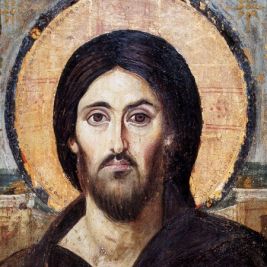 Icon - a sacred object in Christian culture: types, distinctive features, history
Icon - a sacred object in Christian culture: types, distinctive features, history 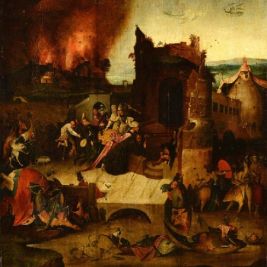 The painting "The Temptation of St. Anthony" by Hieronymus Bosch is a unique and mesmerizing work from the depths of centuries
The painting "The Temptation of St. Anthony" by Hieronymus Bosch is a unique and mesmerizing work from the depths of centuries 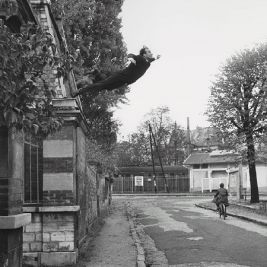 Performance art - provocative art with profound meaning
Performance art - provocative art with profound meaning  Design is a captivating process of artistic planning
Design is a captivating process of artistic planning 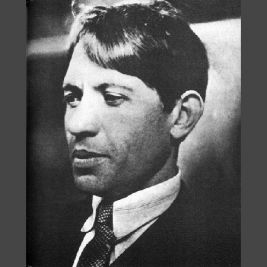 Chaim Soutine - an unsurpassed master of expression
Chaim Soutine - an unsurpassed master of expression  The painting "When Will You Marry?" by Paul Gauguin - bright colors of an exotic country
The painting "When Will You Marry?" by Paul Gauguin - bright colors of an exotic country  Current Popular Items in the Antique Market
Current Popular Items in the Antique Market  Illuminating the Past: The Rise of Vintage Lighting in Modern Decor
Illuminating the Past: The Rise of Vintage Lighting in Modern Decor  Innovative Skyscrapers Reshaping Urban Skylines
Innovative Skyscrapers Reshaping Urban Skylines 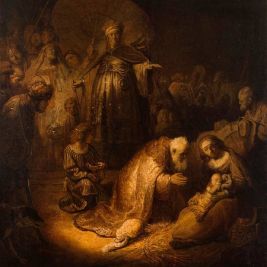 Grisaille is a unique monochromatic art with stunning possibilities
Grisaille is a unique monochromatic art with stunning possibilities